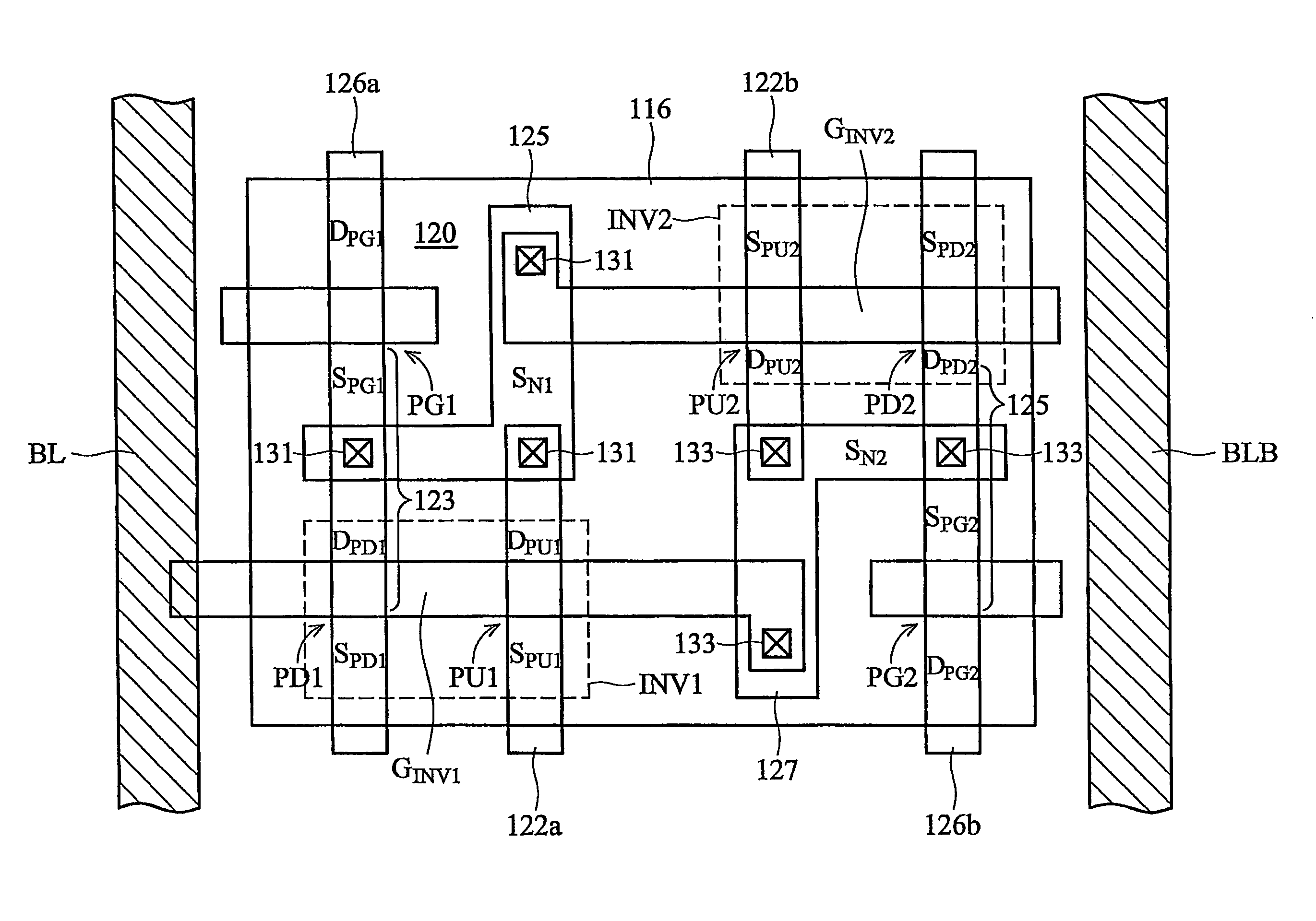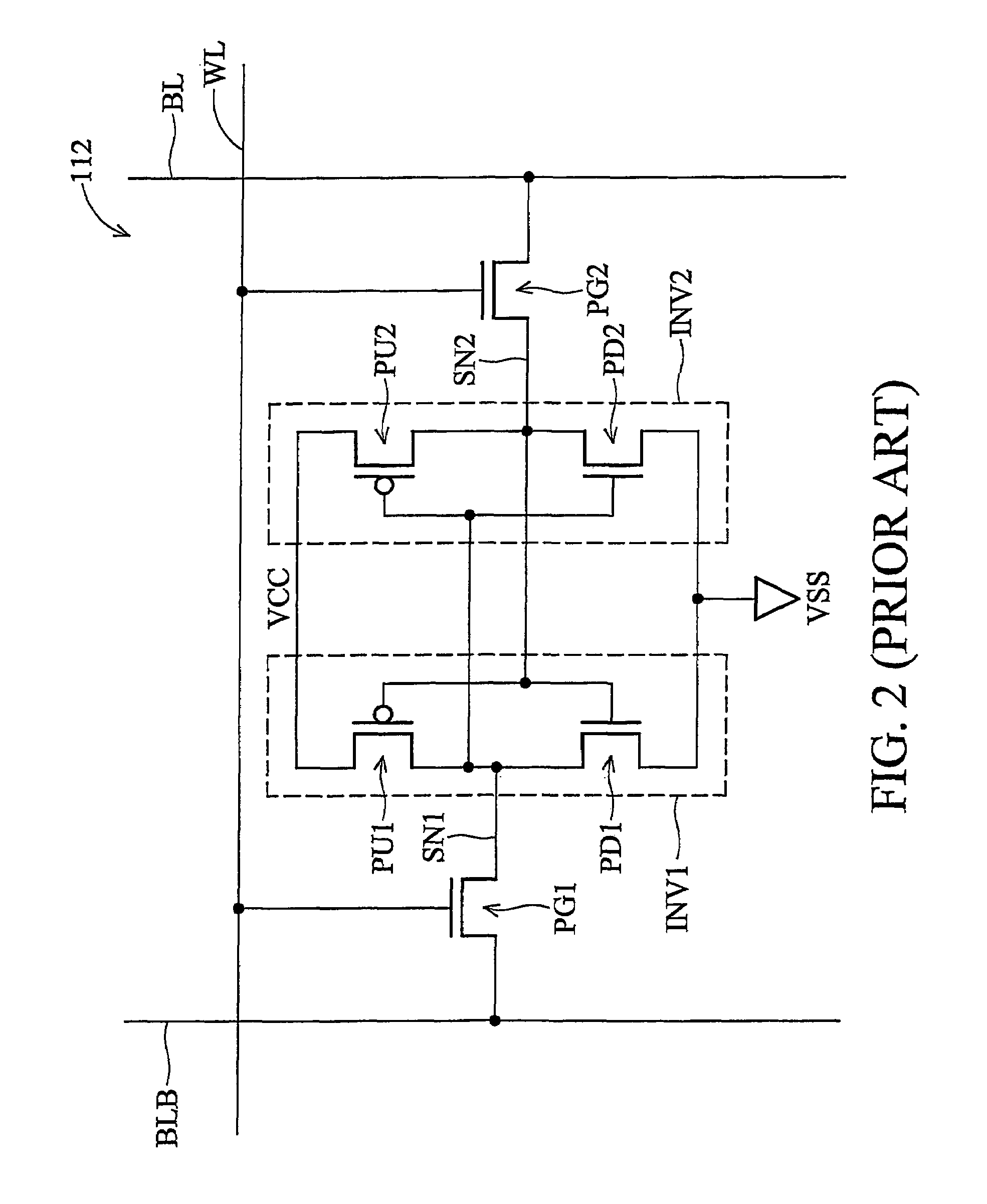SRAM cell for soft-error rate reduction and cell stability improvement
a technology of soft errors and cell stability, applied in semiconductor devices, digital storage, instruments, etc., can solve the problems of soft errors, small cmos devices, and significant challenges, and achieve the effect of cell stability improvement and soft error rate reduction
- Summary
- Abstract
- Description
- Claims
- Application Information
AI Technical Summary
Problems solved by technology
Method used
Image
Examples
third embodiment
[0036]In accordance with a third illustrative embodiment of the present invention, also shown in FIG. 4, the channel width ratio of the pull up transistor channel width WPU1 to the pass gate transistor channel width PG1 is within a range of about 3 to about 1.2. The same range of ratios applies to the channel width ratio of the pull up transistor channel width WPU2 and the pass gate transistor channel width WPG2 in the
fourth embodiment
[0037]In accordance with a fourth illustrative embodiment of the present invention as shown in FIG. 4, the channel area ratio of the pull up transistor channel area APU1 to the pass gate transistor channel area APG1 is within a range of about 3.5 to about 1.25. The same range of ratios applies to the channel area ratio of the pull up transistor channel area APU2 to the pass gate transistor channel area APG2 in the
[0038]It is recognized that the first, second, third, and fourth illustrative embodiments may be combined in any suitable manner that optimizes memory cell performance. For example, a channel area ratio of about 1.75 may be applied between the channel areas APU1 to APG1, as well as the channel areas APU2 to APG2. In the same memory cell, a channel width ratio of about 1.25 may exist between the channel widths WPU1 to WPD1, and the channel widths WPU2 to WPD2.
fifth embodiment
[0039]With reference to FIG. 7, a fifth illustrative embodiment includes an SRAM memory cell 112 similar to those shown in FIGS. 2 through 4. However, as shown in FIG. 5, the memory cell 112 of the fifth embodiment has a capacitor C1 electrically connected to the storage node SN1 and a capacitor C2 electrically connected to the storage node SN2. Illustrative embodiments preferably include SRAM memory cells having one capacitor electrically connected to each storage node.
[0040]A cross section along the line 6-6 in FIG. 6 is shown in FIG. 8. With combined reference to FIGS. 6, 7 and 8, the fifth illustrative embodiment will be further described. The first electrode E1 of the capacitor C1 is the metal wire 128 at the node SN1. The metal wire 128 is preferably a copper wire on the first layer of metal M1 overlying the substrate surface 140. The metal wire 128 may alternatively be a buried interconnect or a butted contact, for example. Placing a copper wire 142 on a second metal layer M2...
PUM
 Login to View More
Login to View More Abstract
Description
Claims
Application Information
 Login to View More
Login to View More - R&D
- Intellectual Property
- Life Sciences
- Materials
- Tech Scout
- Unparalleled Data Quality
- Higher Quality Content
- 60% Fewer Hallucinations
Browse by: Latest US Patents, China's latest patents, Technical Efficacy Thesaurus, Application Domain, Technology Topic, Popular Technical Reports.
© 2025 PatSnap. All rights reserved.Legal|Privacy policy|Modern Slavery Act Transparency Statement|Sitemap|About US| Contact US: help@patsnap.com



